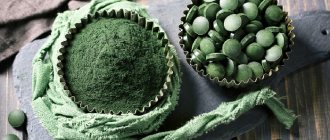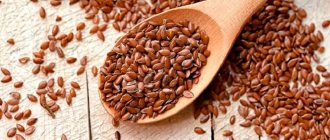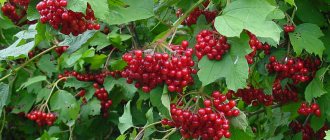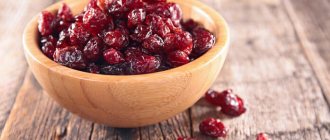Psyllium is a herbal remedy that is the husk of plantain seeds. Typically, the production of the substance involves grinding the shells to flour. Psyllium husk powder can be an independent dietary supplement or the basis of a medicine. The properties of the substance allow it to be widely used in gastroenterological and therapeutic practice: psyllium-based products can be prescribed by allergists-immunologists and dermatologists. In the article we will talk in more detail about the action of the psyllium seed shell and its therapeutic effect, as well as methods and forms of use.
Psyllium seed husk is a natural plant fiber. Regarding the question of how to collect psyllium, keep in mind that flea plantain is used as a raw material in production - it is grown specially. Therefore, you will not be able to obtain the medicine yourself.
The seeds of the plant are record holders for the content of soluble fiber - up to 70% of the total volume. Even oat bran cannot compare with psyllium in this parameter.
In the composition of psyllium, three types of components can be distinguished: good, weakly fermentable and non-fermentable. It is the last two components that are responsible for the ability of the substance to be converted into a gel, this provides sorbing properties and helps normalize stool. And therefore, psyllium is mainly used in gastroenterological practice to combat intestinal dysfunction.
What is psyllium and psyllium husk
Psyllium has several names, for example Ispagol, Isfagula, Plantago Ovata, also known as plantain oval, but most often it is called the husk of plantain seeds. Psyllium grows primarily in South and West Asia, but is commercially harvested and produced in India and Pakistan. If the packaging says USA, England, Great Britain, Russia, this only means that the product was packaged for the end consumer in these countries. There are two main types of psyllium:
- Psyllium Husks – Psyllium seed husk. Taken for the benefit of the gastrointestinal tract, cleansing and weight loss.
- Psyllium Powder is a flour made from the husks of psyllium seeds. Essentially, these are the same husks, but ground to a fine flour. It is used in cooking - baked goods, sauces, cheesecakes, etc. It is not very suitable for taking with water, because it is more difficult to dissolve and becomes very thick.
- There is also psyllium in capsules for oral administration, psyllium wafers, etc. Here you need to look at the raw materials - Powder or Husks. It is more convenient to take, but the effect is worse.
Its beneficial qualities are explained by the large amount of fiber, in the amount of 80-85% fiber. At the same time, soluble fiber usually takes up about 70%; for this indicator, psyllium has no analogues. What are the differences between these two types of fiber:
- Soluble fiber or fibre: A gel-like material that readily absorbs water and then expands in volume. Useful for reducing stomach acidity, normalizing blood pressure, reducing bad cholesterol, diabetes, weight loss.
- Insoluble fiber: does not dissolve in water, usually improves intestinal motility and removal of toxins.
What is important is that both types of fiber cannot be fermented by the intestinal microflora; psyllium passes right through it. This is the second most important reason for its beneficial properties. What other beneficial properties does psyllium have? Let's look at them below.
Use in baking
Psyllium does not contain gluten. Therefore, it can be used in cooking even by those who want to lose weight. In addition, you need to add very little of it to baked goods. When in contact with liquid it swells greatly. 1 g of substance can absorb 45 ml of water and even more.
You can use the product in almost any baked goods. Use it to prepare bread, pancakes, cookies or casseroles. It will replace the gluten contained in premium white flour and will complete the dish.
It is important to prepare the dough correctly. First of all, remember that the dietary supplement needs time to infuse and take the desired form. When you add it to the liquid, let the dough sit for a few minutes. During this period, the plantain shell will absorb moisture and reach the required consistency. You will be able to understand whether it is suitable for baking.
If desired, you can always add a little more powder to make the dough thicker. Or water to dilute it.
Why is psyllium a prebiotic?
Most people don't realize the powerful effects fiber has on the body. Psyllium is the best prebiotic - a substance that feeds beneficial bacteria in the intestines. However, not all people consume enough fiber to meet their daily needs, which can negatively impact their gut flora. Healthy intestinal flora has a positive effect on immunity, efficient absorption of food and reduces overall toxicity in the body. In addition to its preobiotic properties, it helps with diarrhea and constipation. After all, when taken, psyllium absorbs water and swells in the intestines, turning into a gel-like substance. It, in turn, helps form and remove feces. Interestingly, if you have constipation, they are eliminated due to psyllium retaining water in the stool. And if you have diarrhea, then the fibers absorb excess liquid like a sponge. Universal assistant!
Mechanism of action
Psyllium, getting inside the stomach and coming into contact with liquid, gradually thickens. It takes on the appearance of a mucous mass. Moving along the digestive tract, it envelops the membranes and at the same time captures all the pieces of food and waste accumulated on the intestinal walls.
The gentle effect of the substance helps heal wounds and erosions. It consists mostly of soluble fiber. Its advantage over insoluble is that it is a breeding ground for beneficial bacteria. At the same time, pathogenic microflora decreases. The product is indicated for dysbiosis as an effective drug.
Insoluble fiber, which is also included in the product, captures digested food and helps to completely remove it from the body. It is important that both soluble and insoluble fibers are taken at the same time. This is exactly what the dietary supplement provides.
Psyllium helps with diabetes
Psyllium is also beneficial for people at risk of developing type 2 diabetes. With diabetes, it is important to prevent glucose surges, which trigger a number of pathological processes in the body, accelerating the destruction of blood vessels and worsening the course of diabetes. How does psyllium affect blood glucose levels?
Glucose is essentially a simple carbohydrate. People who control their blood sugar levels eat complex carbohydrates, in which several glucose molecules are linked together, because in this form sugar is almost not absorbed into the blood. But after treatment with digestive enzymes, glucose molecules are gradually split off from complex sugar. Before processing, complex carbohydrates travel through the small intestine along with other nutrients in chyme, a liquid bolus of food. When you take psyllium, the following happens:
- The chyme is diluted with a gel-like mass of dietary fiber. The viscosity of chyme increases and its contact with the intestinal wall and digestive enzymes decreases.
- As a result, the processing of nutrients in the intestines slows down and they are absorbed into the blood more slowly.
- Some of the glucose does not have time to penetrate the blood and moves to the final section of the small intestine.
- If a sufficient amount of glucose reaches the final part of the small intestine, GLP-1, glucagon-like peptide-1, is released. It, in turn, acts on specific receptors coupled to the G protein - serpentines. Activation of the latter leads to increased glucose-dependent insulin secretion.
- As a pleasant bonus, it suppresses appetite and reduces excess weight, which is important for people with type 2 diabetes (non-insulin dependent). All the beneficial properties of glucagon-like peptide-1 are described here.
Alpha-glycosidase inhibitors have a similar effect. These are antidiabetic drugs that are taken orally. Alpha-glycosidase inhibitors inhibit intestinal enzymes and reduce the conversion of complex carbohydrates (oligosaccharides, disaccharides, and polysaccharides) to glucose. As a result, less glucose is absorbed in the small intestine and its level does not jump after meals, that is, postprandial hyperglycemia is not observed.
Thus, psyllium husk supports glycemic reactions during meals and reduces blood sugar levels. In multiple clinical studies, psyllium husk reduced insulin spikes and decreased glucose absorption with decreased levels of glycated hemoglobin HbA1c. You can watch more details in the video of doctor Petrik.
Phytochemistry (chemical composition)
Plantain (Isabgol) contains:
| Xylose | 59% |
| Arabinose | 22.3% |
| Uric acid | 6.1% |
| Galactose | 3.7% |
| Glucose | 3.5% |
| Ramnoza | 3% |
| Mannose | 1.6% |
| Ribose (rarely found) | 0.01% |
Psyllium (Isabgol) seeds
Psyllium seeds (Isabgol) contain a mucilaginous substance that constitutes about 30% of its total weight. Mucus is made up of soluble fibers called polysaccharides.
The seeds contain about 40% linoleic acid (LA), an important essential fatty acid. Isabgol seeds contain:
| Fiber Content | 19% |
| Squirrels | 18.8% |
| Triglycerides | 10 – 20% |
Psyllium (Isabgol) Hask
Isabgol husk (Psyllium) contains 75 to 78% fiber, 70% of which is soluble and 30% insoluble.
Psyllium is taken for weight loss
There is evidence that psyllium husk can help people maintain a healthy weight, as well as reduce weight due to the absorption of fluid in the body and a feeling of fullness. The mechanism of this beneficial property is again explained by the fact that the husk of psyllium seeds prevents the ingested food from being rapidly absorbed in the small intestines. The entire gel mass of psyllium with food passes all the way to the final sections of the large intestine, gradually and continuously providing the body with nutrients and a feeling of satiety.
Psyllium husk, in addition to lowering body mass index (BMI), reduces the percentage of body fat . The study notes that this was achieved using psyllium husk alone, combining this product with a healthy diet yielded even more excellent results.
Psyllium reduces bad cholesterol
Using psyllium may help reduce triglyceride levels, a known risk factor for heart disease among patients with type 2 diabetes. A number of studies have shown a 7% reduction in the risk of stroke with a 7g increase in daily fiber intake. Another study showed that dietary fiber can reduce the risk of diverticulitis by 40%. Finally, some studies have shown that psyllium may be beneficial for lowering cholesterol . How it works:
- Once in the small intestine, the gel-like mass of psyllium begins to capture bile, which is secreted by the liver.
- Almost all of the trapped bile cannot be transported back to the liver through the enterohepatic circulation. It, together with feces, passes further into the large intestine.
- The liver feels that it is losing bile, because usually 90% comes back, but now this is not happening. In order for the liver to produce a new portion of bile, it has to intensively remove bad cholesterol from the blood, from those same low-density lipoproteins.
- A decrease in low-density lipoproteins in the blood leads to a decrease in bad cholesterol in our blood.
As a bonus, increased bile flow may be beneficial for gallstones and urolithiasis, potentially helping to reduce the risk of developing gallstones and kidney stones.
Psyllium lowers blood pressure
Psyllium husk can help you treat high blood pressure. The effect is visible when taking psyllium in an amount of about 10 grams per day. One small clinical trial found that fibrous foods provided a reduction in systolic blood pressure of about 7%. These results were independent of age, sex, body weight, alcohol consumption, or urinary sodium/potassium levels.
A study in rats prone to increased blood pressure when exposed to salt found a smaller increase in blood pressure when psyllium husk was added to the diet and suggested that this effect was due to psyllium causing increased excretion of sodium in feces. Another clinical study in 72 healthy people compared the effects of a special high-fiber diet and a healthy diet versus a placebo when followed for 12 weeks. Psyllium husk alone initially reduced systolic and diastolic blood pressure, but the effect did not last the full 12 weeks.
Botanical classification (plant taxonomy)
| Kingdom | Plants |
| Sub-kingdom | Viridiplanta |
| Infra-kingdom | Streptophyta (terrestrial plants) |
| Supersection | Embryophyte |
| Chapter | Tracheophyta (tracheophytes or vascular plants) |
| Subsection | Spermatophytina (Spermatophytes or seed plants) |
| Class | Magnoliopsida |
| Subclass | |
| Super order | Astairan |
| Order | Lamiales |
| Family | Plantaginacea (plantains) |
| Genus | Plantago (plantain or Indian wheat) |
| Kinds | Plantago Ovata (Indian desert wheat) |
Psyllium helps with heartburn and stomach acidity
Many people suffer from acidity and psyllium is the best natural remedy for this condition. How does it work? The husk covers the stomach walls with a protective layer of mucus, which in turn protects them from the burning sensation of the acid. Moreover, since psyllium husk improves digestion and regulates the secretion of gastric juices, it reduces the incidence of acidity that a person may suffer from. Therefore, psyllium is used for diseases of the gastrointestinal tract, gastritis with low acidity, and peptic ulcers of the stomach and duodenum. For acute and chronic enteritis, ulcerative colitis, for diarrhea of various origins and constipation.
The second reason is the ability of psyllium, already mentioned above, to increase the secretion of GLP-1. This peptide has the ability to inhibit the secretion of hydrochloric acid.
Psyllium contraindications and side effects
Most people who use psyllium husk usually feel well. However, minor side effects are possible
- There are sometimes allergies to psyllium. Therefore, you should always start with small doses of 5 grams, gradually increase them over the course of a week to 10-20 grams. By observing the reaction, you can take psyllium for a long time.
- Psyllium should not be used by people with intestinal obstruction, difficulty swallowing, narrowing of the esophagus, or stenosis of any part of the gastrointestinal tract.
- During pregnancy, small dosages up to 5 grams, under the supervision of a doctor.
- Psyllium may interact with some medications. Thus, when interacting with tricyclic antidepressants, lithium, psyllium can reduce the level of these drugs in the blood and, accordingly, their effectiveness.
Use in children
It is not recommended to give psyllium husk to a child if he is under 6 years old. The appointment must be made by the attending physician. On average, for children under 12 years of age, the daily supplement intake is 3 teaspoons. They are divided into several steps. Children over 12 can use the product in the same amount as adults. It is imperative to ensure that your child drinks enough water.
It is not advisable to use dietary supplements on an ongoing basis. The supplement is given for disorders in the digestive tract, to combat constipation or diarrhea.
Instructions on how to take psyllium
There are different recommendations on how to drink psyllium. Some nutritionists advise doing this during meals. Others I recommend taking between meals. In fact, it all depends on your needs, so we will present several dosage regimens; you yourself will choose the option you need.
- For diabetes or related conditions, it is better to take psyllium half an hour before meals. Likewise for heartburn or hyperacidity. Then the fiber will have time to swell in the stomach. The food enters the already prepared gel medium, and the release of insulin will occur more gradually. If such a schedule is inconvenient, then we take it with food.
- If you want to lose weight, take psyllium between meals. Likewise for lowering cholesterol or blood pressure.
- It is undesirable to take psyllium with food due to the appearance of a lump of very poorly digestible mass - a bezoar. It is a dense accumulation of partially digested and undigested residues that usually occurs in the stomach.
- Psyllium should not be taken together with medications, vitamins or other dietary supplements. We take a break for a couple of hours.
- Psyllium should not be taken dry as it may cause suffocation. Take only mixed in water! Take the capsules with water.
Recipes
In cooking, it is used as a thickener or a separate component. For example, a couple of interesting recipes.
Dietary crumpets according to Dukan
For preparation:
- 200 ml skim milk;
- 10 g psyllium;
- 1.5 tsp. baking powder;
- 4 tbsp. l. gluten;
- sugar substitute and salt to taste.
Pour milk over the ground plantain husk and let stand for 20-25 minutes. After swelling, add the remaining ingredients and knead the mass thoroughly. Place the mixture in suitable molds and place in the oven (180 degrees) for 40 minutes . If desired, you can add cinnamon, ginger, basil, turmeric, etc. to the dough.
Zucchini with minced meat
What you will need:
- 2 small zucchini;
- 300-350 g minced meat;
- onions – 1 pc.;
- sweet pepper – 1 pc.;
- flour (preferably sesame) – 1 tbsp. l.;
- psyllium – 1.2 tsp;
- cheese – 100-150 g;
- vegetable oil – 1 tbsp. l.;
- salt and spices as desired.
Wash the vegetables, remove the core from the zucchini, after dividing them in half lengthwise. Cut the extracted zucchini pulp into cubes along with peppers and onions, then lightly fry in a small amount of vegetable oil, add salt and spices.
Add psyllium, flour and a third of a glass of water to the fried mixture. Mix thoroughly. Now put the filling into the prepared zucchini boats and bake in an oven preheated to 200 degrees for 30-40 minutes . A couple of minutes before it is fully cooked, sprinkle the browned dish with grated cheese.
Dosage when taking psyllium
- Start with 1 teaspoon (5 grams), stir in a glass of warm water or milk. Add water a little at a time so that no lumps appear, a mixer is acceptable. You can let the composition swell for 10 minutes, or drink it without waiting for it to swell, it doesn’t matter. Drink another glass of water. Drink more fluids throughout the day.
- Assess your body’s reaction; if there is no discomfort, after a week you can add another 1 teaspoon. Then continue taking it in the same regimen, 5 grams in the morning and 5 grams in the evening. Usually consume no more than 20 grams per day.
- Do not take large amounts at once, as this may cause gas and allergies.
Psyllium and psyllium husk on iHerb
There are not many psyllium options available on iHerb. We will present the optimal options in terms of purity and composition. In general, it is best to take the Husk version without capsules - position 1,4,5.
- Now Foods, Whole Psyllium Husk, 454 g. Husks Version, with water. 7 grams in two tablespoons. The ratio of soluble to insoluble fiber is 6:1. An analogue in a jar is here.
- Now Foods, Psyllium Husk Powder, 680g This is psyllium flour, used for baking. An analogue in a jar is here.
- Now Foods, Psyllium Hull Capsules, 700 mg, 180 Vegetarian Capsules. Husks version in capsules, washed down with water. Two capsules contain 1 gram of husk in a ratio of 9:1. Plus 1.4 grams of flour was added, which is acceptable for the capsule version.
- Yerba Prima, Whole Psyllium Husk, Colon Cleanse, 340 g. Husks Version, with water. 10 grams in two tablespoons. The ratio of soluble to insoluble fiber is 3:1, this is not the best result, it is more suitable for improving intestinal motility. The analogue is here.
- Source Naturals, Psyllium Husk Powder, 340 g. Husks Version, with water. 10 grams in two tablespoons. The ratio of soluble to insoluble fiber is 4:1, more suitable for improving intestinal motility.
Analogs
Finding a replacement for psyllium is quite difficult. But if you still have problems purchasing the original product, try:
- crushed flaxseeds in a ratio of 1 to 1;
- ground onion seeds (again 1 to 1);
- xanthan gum, which will be required in smaller quantities (the concentration of 1 tablespoon of plantain seeds is equal to 1 teaspoon of gum).
Please note that substituting ingredients may change the consistency or taste of the dish.











